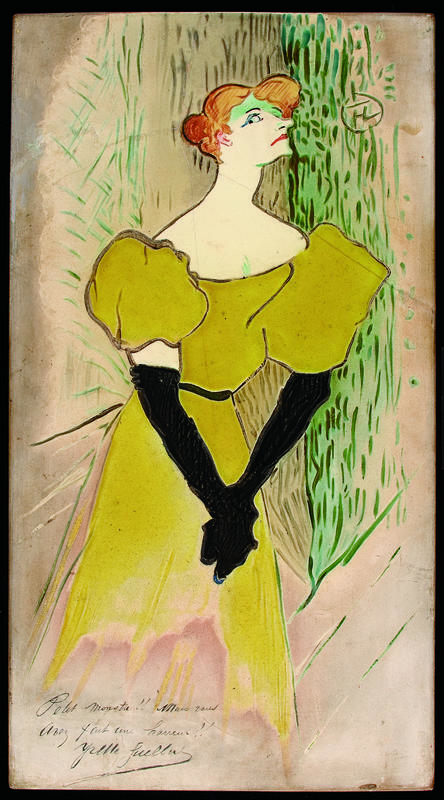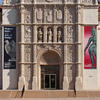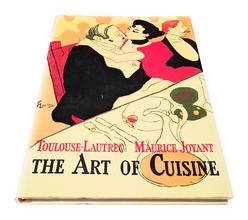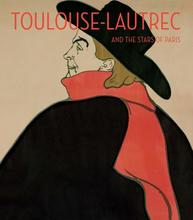More about Yvette Guilbert
- All
- Info
- Shop

Contributor
Toulouse-Lautrec’s Yvette Guilbert was praised by just about everyone— except the subject herself.
In fact, visible in the lower left corner is Yvette’s own commentary: “Little monster! You have made a monstrosity of me!” It’s hard to see why Parisian performer Guilbert objected to this highly flattering portrait. Was it the exaggerated nose? The garish red slasher mouth? The menacing side-eye? Guilbert often voiced her objections to Toulouse-Lautrec’s caricatures. Exasperated by a poster he made to advertise her act, she told the artist, “For the love of heaven don’t make me so atrociously ugly!” Toulouse-Lautrec was unphased. This is, after all, the artist who designed his own extra-strength cocktail.
Despite her dubious feelings about Toulouse-Lautrec’s illustrations, Guilbert was no stranger to criticism. The renowned playwright Maurice Lefèvre once described her as a “sexless, long leech” and compared her arms to tentacles. Along with the critics came hordes of raving fans, among them Sigmund Freud. Opera legend Verdi himself personally requested that she not train her voice classically, lest she lose her unique style. That's a bit like being begged by Picasso to abstain from art classes to preserve a miraculous talent for painting.
Guilbert grew up in a family that could never make ends meet, constantly impoverished by her father's gambling habit. When times were hard, the family sold furniture to pay for meals. Determined to improve her lot in life, Guilbert started to sing in the popular café-concerts. The response was abysmal. After being heckled out of a gig, Guilbert responded with the hauteur of a noblewoman. She vowed to return a wealthy woman and proclaimed the establishment "Oh! So! Stupid!"
It's no surprise Toulouse-Lautrec chose to caricature Yvette; she was practically a parody of herself. Guilbert was delightfully eccentric, singing about subjects as offensive as aborted fetuses. She was as recognizable as La Goulue, never seen without her signature black gloves. Her dress was a blinding yellow, and she was so committed to her wasp waist that she suffered kidney damage from her corset. On stage she was jarringly motionless, using only her gloved arms to dance to her music. Or, as Lefèvre would say, her tentacles.
Toulouse-Lautrec may not have captured Guilbert's heart with his unflattering portrait, but he certainly didn't tarnish her fame. She performed for the Prince of Wales at a private party, a socialite to rival the much later Tamara de Lempicka. She made her rounds in America, singing at Carnegie Hall, yet was characteristically unimpressed and deemed the country a cesspit of commercialism. She would go on to feature in seven films and publish five books. Human, or robot masquerading as a singer? Hard to tell.
Sources
- Brodskaya, Nathalia. Toulouse-Lautrec. London: Parkstone International, 2011.
- Donson, Theodore B. and Marvel M. Griepp. Great Lithographs by Toulouse-Lautrec. New York: Dover Publications, 1982.
- Hackel, Erin. “Yvette Guilbert: La Diseuse.” The Kapralova Society Journal 15 (2017): 1-5.
- “Henri de Toulouse-Lautrec.” Wikipedia. August 16, 2017. Accessed August 16, 2017. https://en.wikipedia.org/wiki/Henri_de_Toulouse-Lautrec.
- “Yvette Guilbert.” Wikipedia. July 13, 2017. Accessed August 16, 2017. https://en.wikipedia.org/wiki/Yvette_Guilbert.













